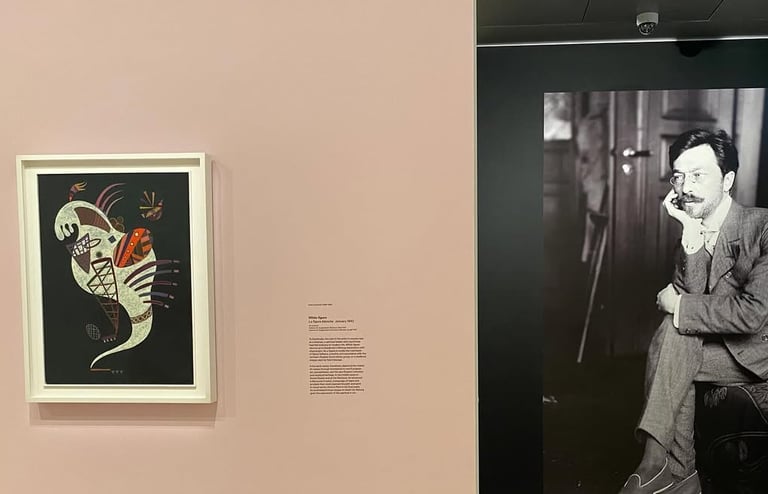Kandinsky's Worlds of Points, Lines and Planes at Art Gallery NSW
The Russian artist Wassily Kandinsky (1866–1944), hailed as a pioneer of abstract art, once said,
'Everything starts with a point. From a point comes a line; from a line comes a plane, from a plane comes a solid form. From there, the universe unfolds.'
Throughout his artistic career, Kandinsky experimented endlessly, striving to express the core spirit of existence, which he called 'inner necessity.' His style evolved dramatically from early realism and Impressionism to Fauvism and Expressionism, eventually breaking boundaries with geometric abstraction.
This current exhibition at the Art Gallery of New South Wales (AGNSW), in collaboration with the Solomon R. Guggenheim Museum in New York, is set to be the largest retrospective of Kandinsky's work ever held in Australia. It will showcase over 50 precious pieces, including iconic works like Blue Mountain, Dominant Curve, and Composition 8.
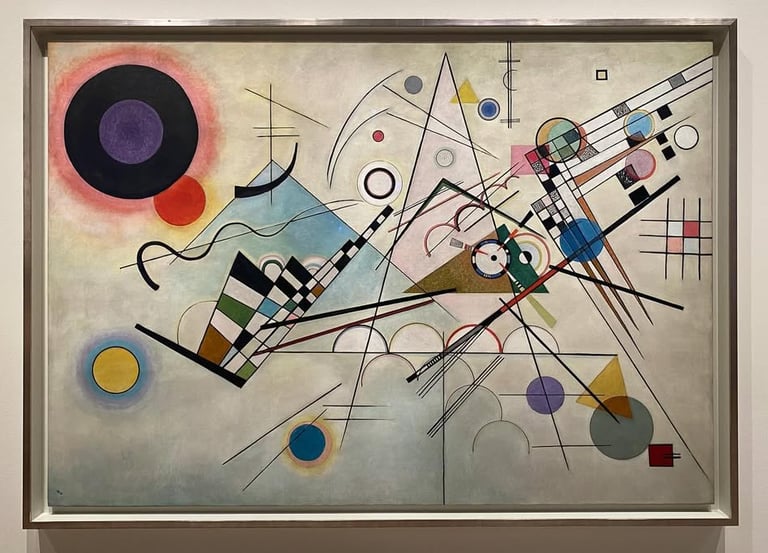

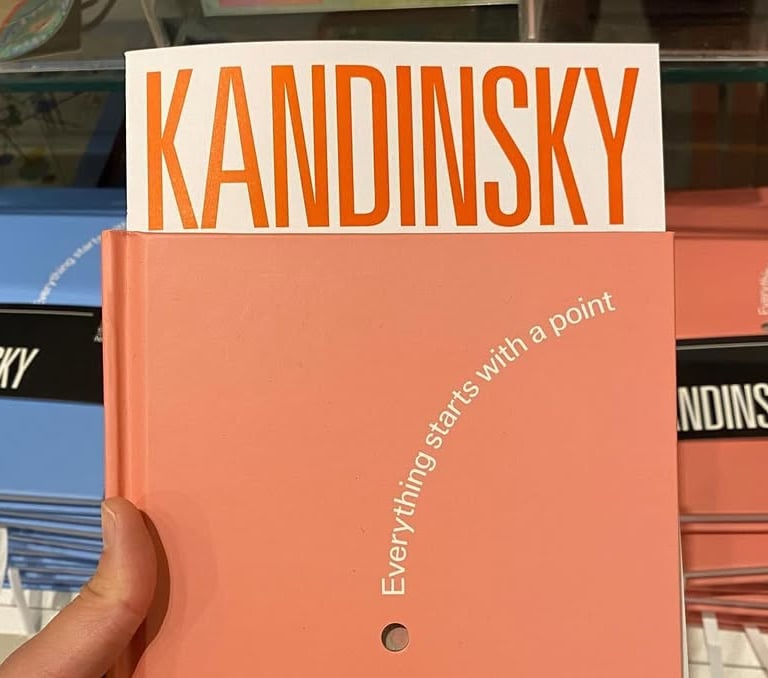

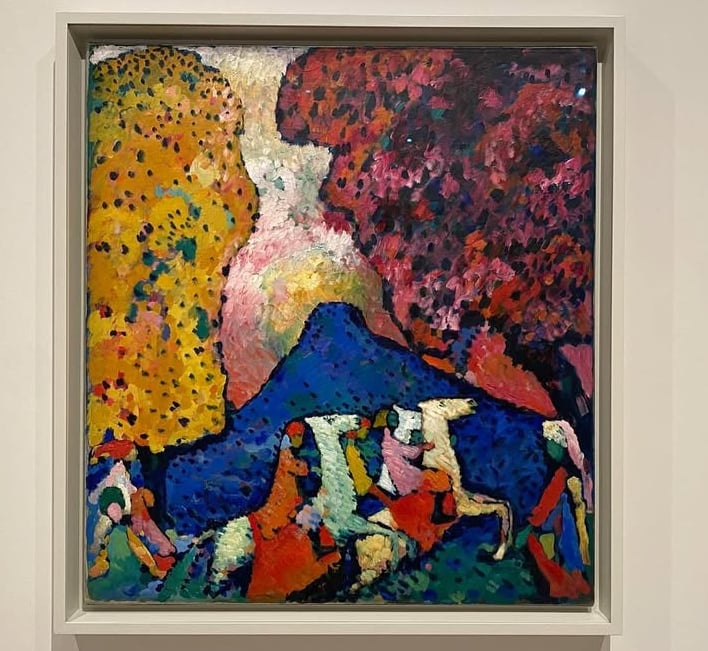

Exhibition Details
Exhibition: Kandinsky
Dates: 4 November, 2023 – 10 March, 2024
Venue: Art Gallery of New South Wales, Sydney
Tickets:
General | AUD 35
Seniors | AUD 32
Members | AUD 30
Family Ticket | AUD 88 (two adults and three children)
Youth (12-17 years) | AUD 12
Website: https://www.artgallery.nsw.gov.au/
Composition 8|Kandinsky|July 1923
While appreciating his paintings, I also enjoy discovering the stories behind the art. Art is always intertwined with history, society, and culture. Learning about the artist's experiences, the art circles they moved in, and the political environments they faced helps us grasp the emotions, worldviews, and philosophies that are often reflected in their work. Let’s take a closer look at Kandinsky's life.
'The artist must train not only his eye but also his soul.'
1866 – 1913: From Law to Art
Born into a middle-class family in Moscow, Kandinsky was introduced to art and music by his parents from a young age. He studied law and became an assistant professor at Moscow University. In 1896, he was profoundly influenced by Monet’s Haystacks series during an exhibition, captivated by how Monet blended everyday light with colour. At 30, he made the bold decision to resign from his teaching position and move to Munich to study art. During this time, he traveled across Europe and North Africa with his partner, Gabriele Münter, absorbing diverse cultures and sparking a new chapter in his creative journey.
After settling in Bavaria in 1908, he joined the 'Blue Rider' group in Munich, where he explored the expressive power of colour and the symbolic meaning of form. His style began to shift from naturalism to fantastical narratives, paving the way to abstraction. Common themes, such as horses and riders (like in Blue Mountain, 1908–09), symbolised his resistance to traditional aesthetics and hinted at his utopian visions for the future, possibly reflecting on the societal turmoil and human contradictions leading up to World War I.
Blue Mountain|Kandinsky|1908 - 09
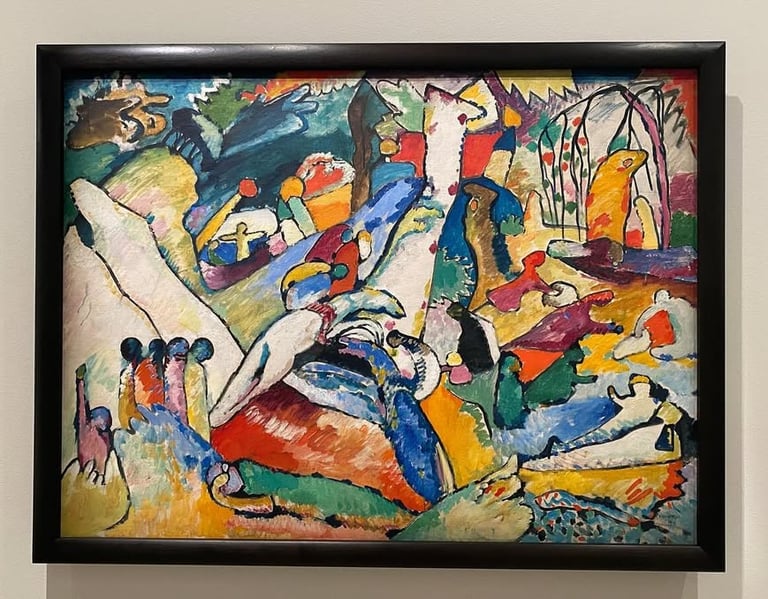

Composition II|Kandinsky|1909 - 10
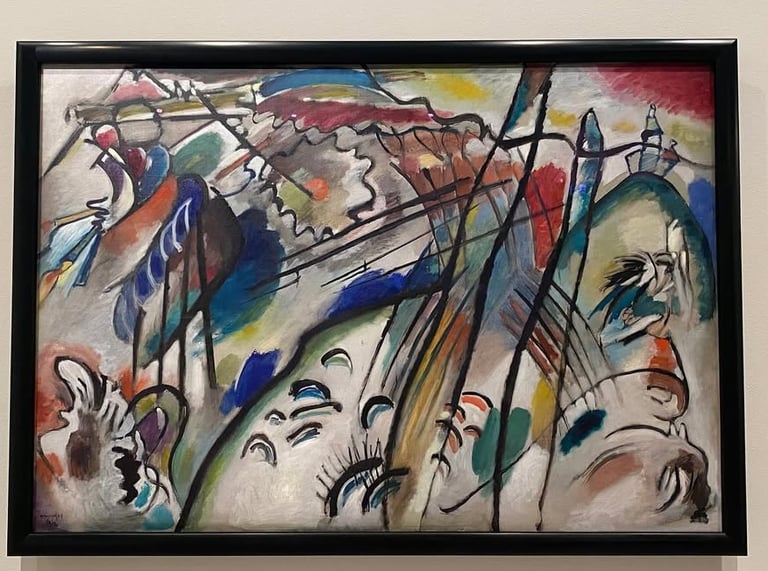

Improvisation 28|Kandinsky|1912
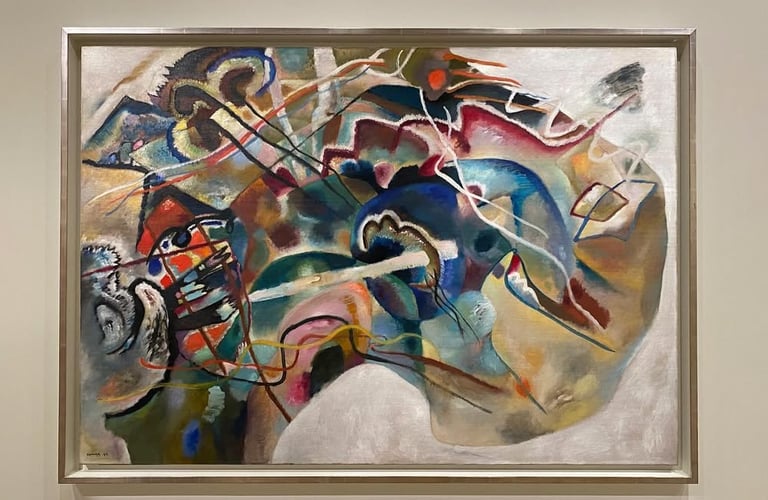

Painting with white border|Kandinsky|May 1913
1914 - 21: War and Return
When World War I broke out, Kandinsky was forced to leave Germany due to his Russian nationality. Later that year, he returned to his hometown of Moscow, where he continued to deepen his experiments with abstract painting. His style evolved, incorporating the utopian aesthetics of Russian and Ukrainian avant-garde movements, advocating for a universal aesthetic language rooted in geometric forms. However, his emphasis on spirituality clashed with the Soviet Union's production-oriented artistic ideals.
'There is no ’must‘ in art, which is forever free.'
1922 - 33: Teaching and Creating at Bauhaus
After the war, Kandinsky returned to Germany and began teaching at the Bauhaus in 1922. Founded by architect Walter Gropius in 1919, the Bauhaus was an influential art and design school. Kandinsky believed in the power of art to change individuals and society, a conviction that resonated with the school’s mission, providing him with an environment ripe for experimentation and innovation. During this period, he further explored the psychological and spiritual effects of colour and form, with recurring circular motifs symbolising the infinite realms of spirit and the universe. However, in 1933, the Bauhaus was forced to close under Nazi pressure, leading to another upheaval in Kandinsky's life.
1933- 44: Late Years in Paris
In December 1933, Kandinsky and his wife, Nina, settled in the suburbs of Paris. Despite facing political turmoil and poverty, he remained highly creative. He experimented with different materials, combining enamel paint or pigments with sand to create imaginative works.
During World War II, the Nazi regime confiscated Kandinsky's artworks, denouncing modern art as 'degenerate' and classifying works that didn’t conform to societal standards as such. His pieces fell victim to this campaign, while Stalinist authorities in the Soviet Union closed museums and stored many of his works away. Due to wartime shortages of materials and frequent relocations, Kandinsky’s later works became smaller in scale. He passed away in Paris in 1944 at the age of 78.
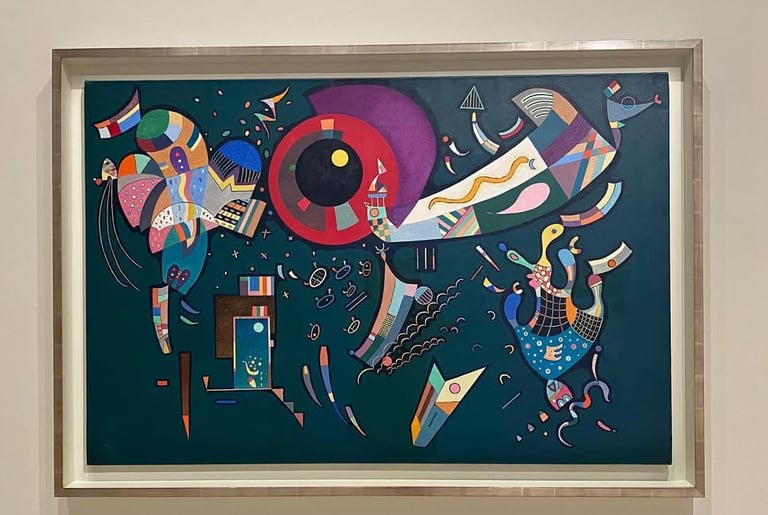

Around the circle|Kandinsky|May - Aug 1940
